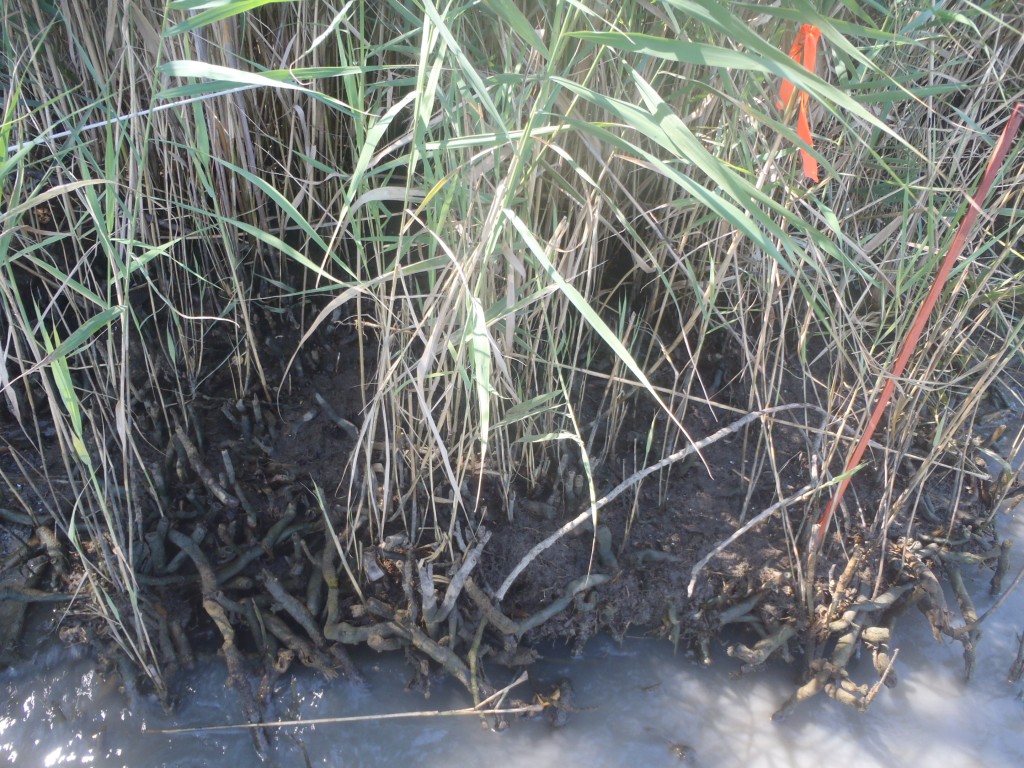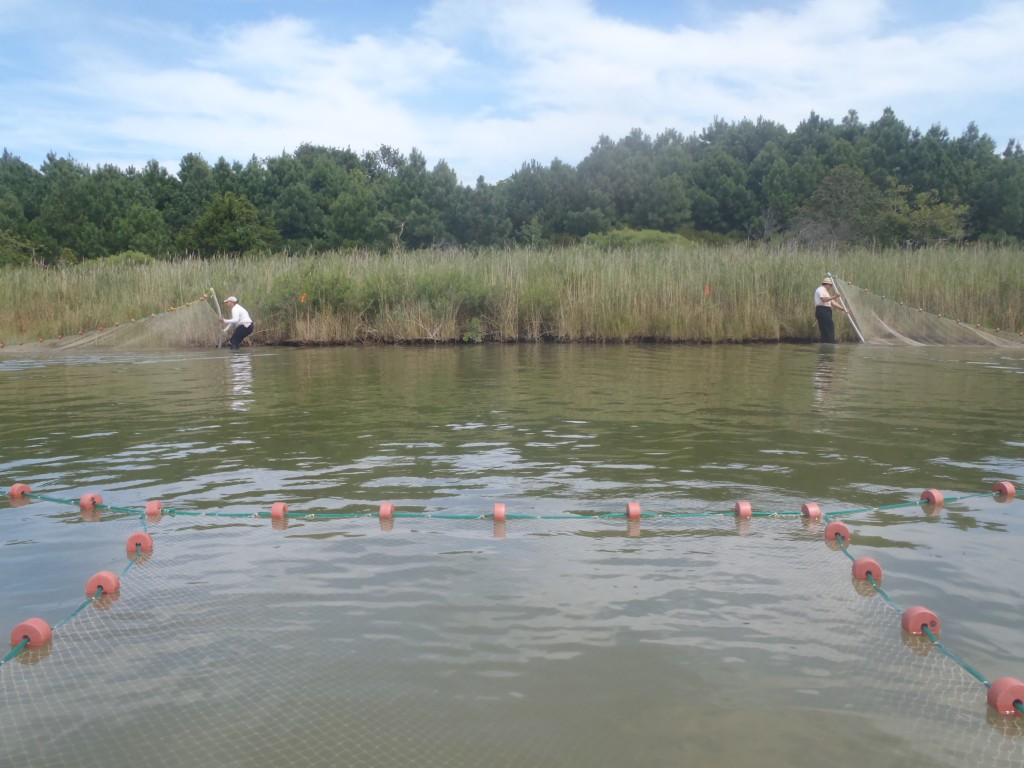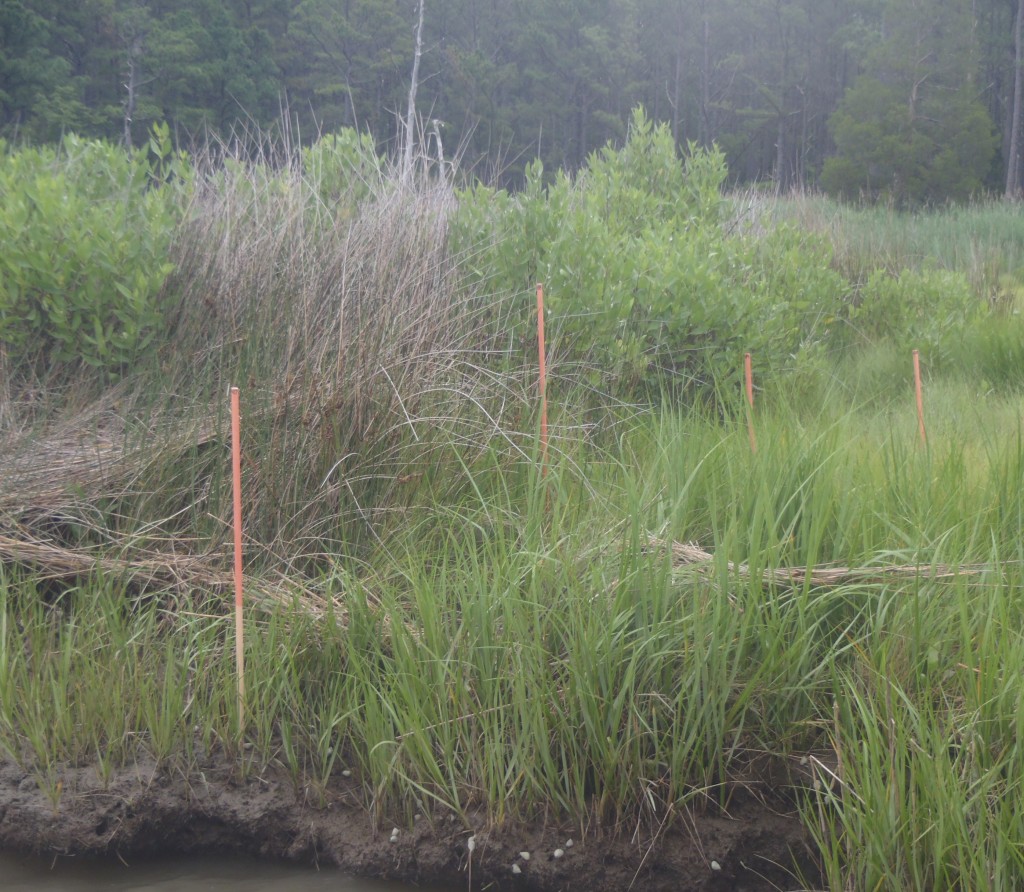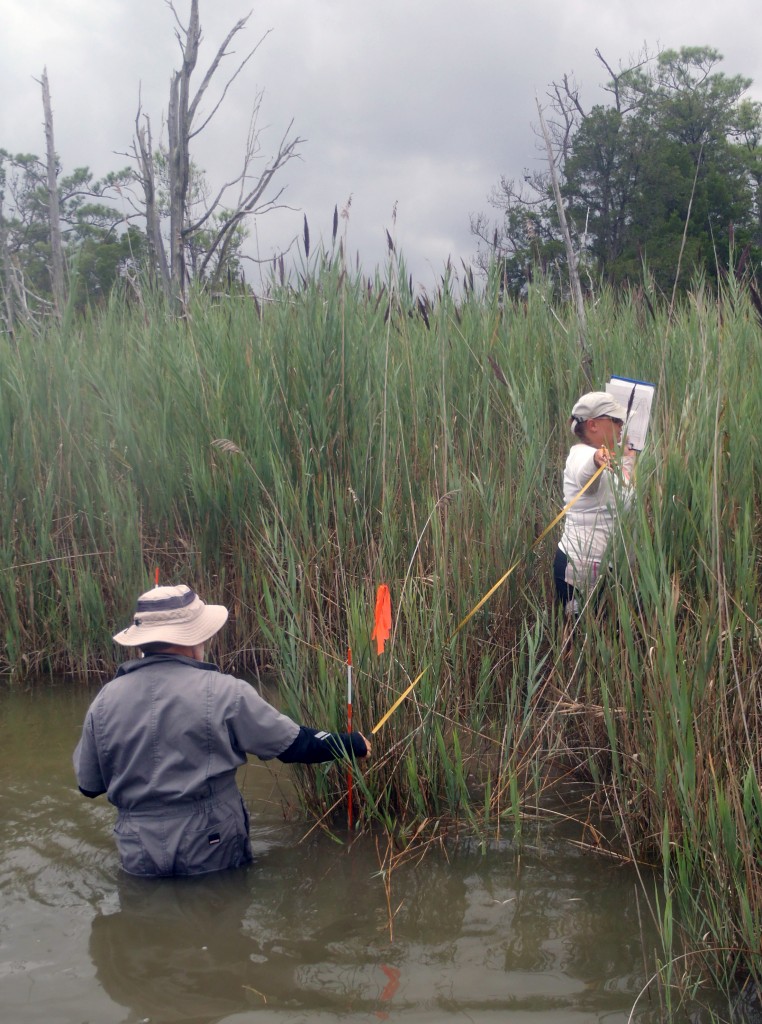How an invasive marsh plant could leave many fishes and invertebrates homeless, hungry and vulnerable to predators
by Heather Soulen, SERC marine ecology lab technicianIt’s no surprise that invasive species can dramatically alter an ecosystem. Often, invasive species outcompete native species and disturb ecosystems that have not evolved to handle the new intruder(s). One such invader is the introduced common reed (Phragmites australis australis). Introduced Phragmites alters native plant communities that native animals use. Over the past several decades, native marshes containing plants such as marsh elder, saltmeadow hay, black needlerush, sea lavender, cordgrasses, threesquares and bulrushes have fallen to introduced Phragmites in the Chesapeake Bay and throughout the Atlantic coast, turning once diverse marshes into a thick monoculture forest.
The Great Marsh Surface Uprising
How might Phragmites transform tidal marshes in the Chesapeake Bay? Thanks to a dense underground network of roots and rhizomes, as well as a thick aboveground forest that traps living and sediment material, Phragmites builds new soil faster than most native species, elevating the marsh surface and filling in small rivulets and surface depressions.

Phragmites’ roots and rhizomes make it a champion soil builder. But in doing so, it can take away underground channels tiny aquatic creatures like nekton need to survive. (SERC)
Simplifying the Not-So-Simple
On the surface, the question seems quite simple. However, in science, a seemingly simple question must often be broken down into smaller, more specific and testable questions. For example, to examine the link between marsh type, marsh elevation, transient nekton and nearshore predators, the Marine Ecology lab compared native and Phragmites marshes over a falling tide (from high to low) and asked four questions:
- When do transient nekton prey move off the marsh surface?
- How much predation is occurring and when does it happen?
- Which and how many predators are present in the nearshore zone during high and low tide?
- How much water above the marsh surface is available for nekton prey to use at high tide?
Complicating this is the fact that no two marshes are alike. Wind, wave action, plant type and human disturbances can all affect the morphology (landscape or shape) of a marsh. To address this, we looked at important marsh characteristics, such as marsh edge morphology, plant species composition and water depth at the land-water interface, to help understand how marsh complexity might contribute to patterns seen in the field.

A 200-foot seine net helped ecologists capture and identify nearshore predators that feed on nekton. (SERC)
Conventional and Unconventional Methods
While most people use minnow traps to catch bait for fishing with friends and family, researchers sometimes use them to capture small prey fishes and invertebrates over short time periods. In this study, we checked minnow traps every hour during a falling tide to describe the timing of prey movement off the marsh surface. To evaluate relative predation pressure on nekton, mummichogs (Fundulus heteroclitus), also known as “Bull minnows” at many bait shops, were tethered at each marsh type and checked every hour for evidence of predation. We deployed a large 200-foot seine net at each marsh type at high and low tide to capture, identify and count predator species like striped bass, white perch, spotted seatrout and blue crabs in the nearshore zone.

Phragmites marsh. The sticks, painted red with Elmer’s glue that washed off in the water, mark how deep the marsh was under water at high tide. (SERC)
What’s Next?
It’s early winter now, and most of the data have been entered and proofed for quality control. Now begins the synthesis part of the study. Over the next couple of months, the Marine Ecology lab will analyze the data from this past summer and merge patterns generated from the four study components into a single cohesive image to see whether or not introduced Phragmites marshes can alter the relationship between transient nekton and nearshore predators in the Chesapeake Bay.


